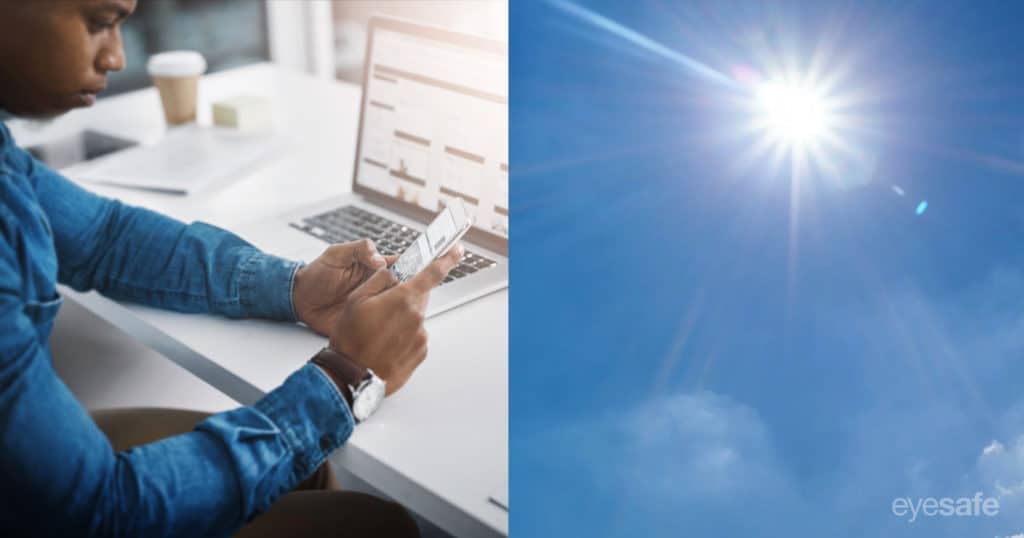The short answer is no. Blue light is beneficial in modest amounts. In fact, about 25% of sunlight is blue light, although the actual amount at any point in time depends on your latitude and the angle of the sun during a particular season, the time of day, your total time outdoors.
Because of its higher energy, blue light penetrates deep into our eyes to the retina. Once it reaches the retina, blue light plays an important role in the body by suppressing the production of melatonin, which increases our alertness in the morning and maintains our circadian rhythms. Similarly, as the sun sets in the evening, our eyes take in less blue light, which once again signals the production of melatonin and enables us to sleep. Research has also shown that blue light boosts alertness, helps memory and cognitive function, and elevates mood.
Because too much blue light can have negative effects on the human body, humans have instinctively developed ways to limit the amount of blue light that reaches our retinas, including pupil constriction, reflexively looking away from the sun, and squinting in bright sunlight.
Although humans have evolved to accommodate proper amounts of beneficial blue light from the sun, we are only now recognizing that man-made digital light presents new concerns for the health of our eyes. Today, artificial LED-produced blue light is nearly inescapable, and is presented through dozens of man-made sources, including streetlights, interior lighting, and through our many digital devices such as smart phones, tablets, laptops, and desktop monitors. This latter category of digital devices is of particular interest because we are often positioned very close to our device screens, day after day, for many hours at a time.
HOW DOES BLUE LIGHT IMPACT THE EYES?
Anterior structures of the adult human eye (the cornea and lens) are very effective at blocking UV rays from reaching the light-sensitive retina at the back of the eyeball. But HEV blue light is different, with much of it passing through the cornea and lens and reaching the retina at the back of the eye. Studies suggest that, over time, cumulative exposure to the HEV blue light could cause specific long-term damage to your eyes:
- Potential damage to retina cells, particularly in children and teens
- Long-term vision problems such as increased incidences of age-related macular degeneration (AMD)
- Suppressed production of the natural release of melatonin, which can lead to disrupted sleep cycles
- Digital eye strain, which is commonly exhibited by dry eyes, headaches, and blurred vision.
Perhaps the most at-risk groups for blue light impacts are children and teens, who not only consume massive amounts of digital screen time, but whose eyes are not yet fully developed to mitigate exposure to blue light. Similarly, we lose protective melanin cells as we age, making the elderly particularly susceptible to increased incidences of age-related macular degeneration. For all age groups, too much digital blue light late at night (e.g., reading a novel on a tablet or e-reader, or spending time on social media at bedtime) can disrupt sleep cycles, potentially causing sleepless nights and daytime fatigue.
